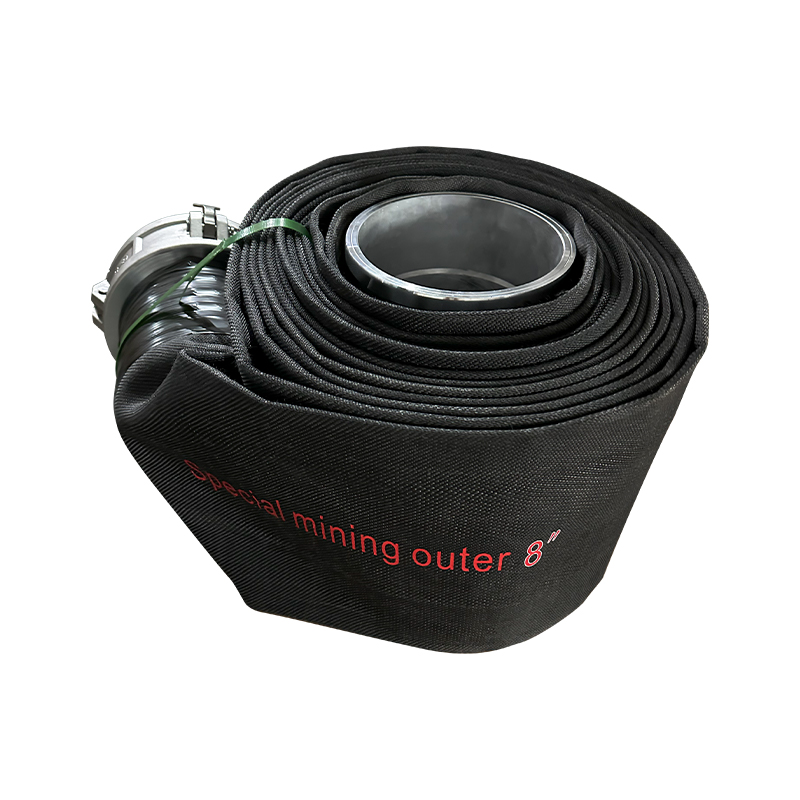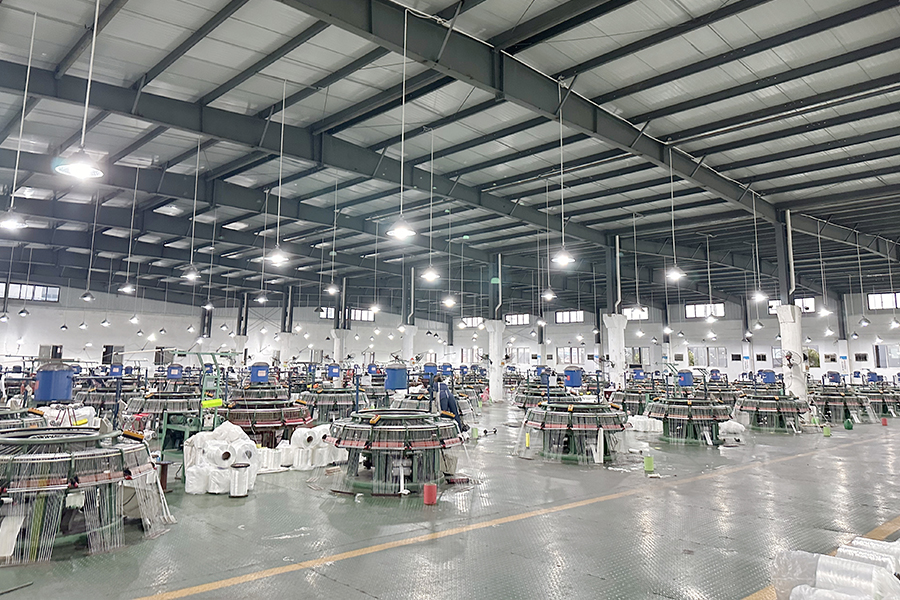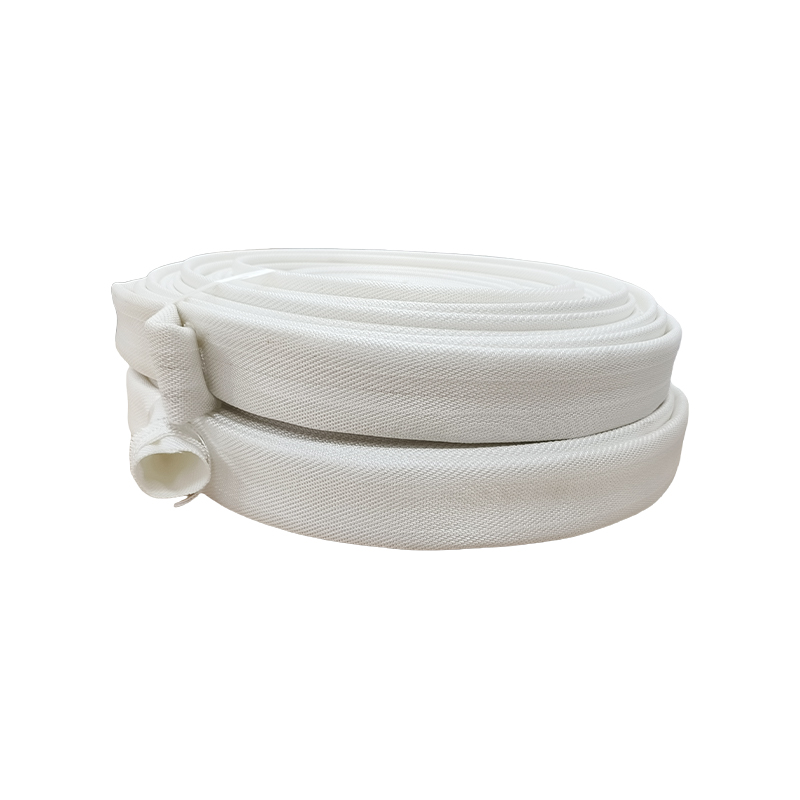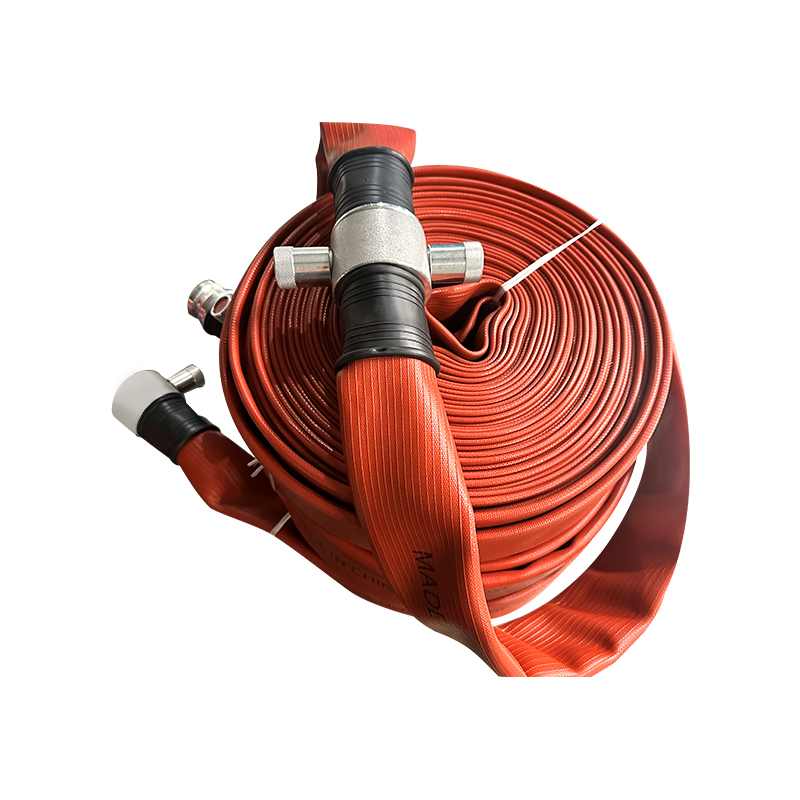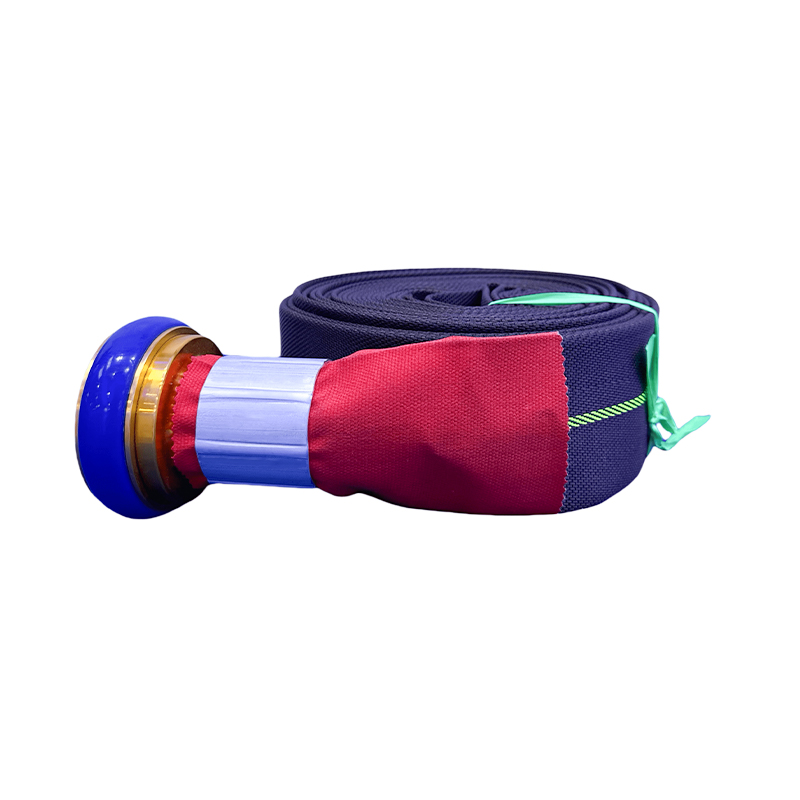- 1 Fundamental Hose Construction Layers and Their Functions
- 2 Material Selection for Extreme Mining Conditions
- 3 Reinforcement Systems for Pressure Management and Durability
- 4 Comparative Analysis of Hose Construction Types for Mining Applications
- 5 Abrasion Resistance Technologies and Wear Protection
- 6 Chemical Compatibility and Environmental Resistance
- 7 Connection Systems and End Fitting Considerations
- 8 Safety Features and Failure Prevention Systems
- 9 FAQ
- 9.1 What is the typical service life for mining dewatering hoses?
- 9.2 How do I determine the appropriate pressure rating for mining dewatering hoses?
- 9.3 What are the most important factors when selecting hoses for abrasive slurry applications?
- 9.4 Can mining dewatering hoses be repaired, or must they be replaced when damaged?
- 9.5 What certifications and standards apply to mining dewatering hoses?
Special mining outer dewatering hoses represent critical infrastructure components in mining operations, responsible for transporting water, slurry, and other fluids from underground workings or open pits to treatment facilities or discharge points. The construction of these specialized hoses must address the unique challenges presented by mining environments, including abrasive materials, chemical exposure, extreme pressures, and demanding installation conditions. This comprehensive guide examines the key construction considerations for special mining outer dewatering hoses, providing detailed insights into material selection, reinforcement strategies, and design features that ensure reliable performance in the world's most challenging dewatering applications.
8-Inch Mining Pressure-Resistant External Drainage Flat Hose Pipe With Storz Connectors
Fundamental Hose Construction Layers and Their Functions
The construction of special mining outer dewatering hoses involves multiple specialized layers, each serving distinct functions that collectively determine the hose's performance characteristics, durability, and service life. Understanding these construction layers and their interactions provides the foundation for selecting appropriate hoses for specific mining applications and operating conditions. Each layer must be engineered to withstand the unique stresses encountered in mining dewatering while maintaining flexibility, abrasion resistance, and pressure containment capabilities throughout the hose's service life.
- Inner Tube Construction: The innermost layer directly contacting conveyed materials, requiring chemical resistance, abrasion protection, and smooth fluid dynamics.
- Reinforcement Systems: Multiple layers of textile, wire, or synthetic reinforcement that provide structural strength and pressure containment capabilities.
- Cover Materials: The external protective layer defending against environmental factors, abrasion, impact damage, and weather degradation.
- Bonding Interfaces: Critical adhesion points between different layers that prevent delamination under pressure cycling and mechanical stress.
- End Fitting Integration: Specialized termination systems that ensure secure connections while maintaining hose integrity at attachment points.
Material Selection for Extreme Mining Conditions
The selection of appropriate materials for special mining outer dewatering hoses requires careful consideration of the specific chemical, physical, and environmental challenges present in mining applications. Different mining operations present unique combinations of abrasive solids, chemical compositions, temperature extremes, and mechanical stresses that demand tailored material solutions. Understanding the properties and limitations of available materials enables optimal selection for specific mine dewatering requirements and operating conditions.
- Abrasion-Resistant Elastomers: Specialized rubber compounds with enhanced filler systems and polymer modifications for superior wear resistance.
- Chemical-Resistant Formulations: Elastomers specifically engineered to withstand acidic mine water, alkaline conditions, or specific chemical contaminants.
- Temperature-Stable Materials: Compounds that maintain flexibility and structural integrity across the temperature ranges encountered in mining applications.
- UV and Weather-Resistant Cover Materials: External compounds that protect against solar degradation, ozone exposure, and atmospheric elements.
- Food-Grade and Environmental Options: Specialized materials for applications where environmental compliance or water quality is paramount.
Reinforcement Systems for Pressure Management and Durability
The reinforcement system represents the structural backbone of special mining outer dewatering hoses, determining their pressure ratings, burst strength, and resistance to mechanical damage. Different reinforcement approaches offer distinct advantages for specific pressure ranges, flexibility requirements, and application conditions. Understanding these reinforcement technologies enables selection of hoses with appropriate strength characteristics for the pressure profiles and mechanical stresses encountered in mine dewatering operations.
- Textile Reinforcement Layers: Multiple plies of high-strength synthetic fabrics providing basic pressure containment and flexibility.
- Steel Wire Reinforcement: Spiral-wound or braided steel wires for high-pressure applications requiring maximum burst strength.
- Synthetic Cable Systems: High-strength synthetic fibers offering corrosion resistance and excellent strength-to-weight ratios.
- Hybrid Reinforcement Approaches: Combinations of different reinforcement materials optimized for specific performance requirements.
- Helix Wire Integration: Embedded wire helices that prevent collapse under vacuum conditions while maintaining flexibility.
Comparative Analysis of Hose Construction Types for Mining Applications
Selecting the optimal construction for special mining outer dewatering hoses requires understanding how different construction approaches perform across key performance parameters relevant to mining applications. Each construction type offers distinct advantages and limitations in areas like pressure capacity, abrasion resistance, flexibility, and chemical compatibility. The table below compares the most common hose construction types to inform selection decisions based on specific mine dewatering requirements and operating conditions:
| Construction Type | Maximum Pressure Rating | Abrasion Resistance | Chemical Resistance | Flexibility | Typical Mining Applications |
| Fabric Reinforced Rubber | Low to Medium (150-300 PSI) | Good | Good to Very Good | Excellent | General dewatering, low-pressure transfer |
| Wire Reinforced Rubber | Medium to High (300-600 PSI) | Very Good | Good to Very Good | Good | High-pressure dewatering, pump discharge |
| Steel Cable Reinforced | Very High (600-1200 PSI) | Excellent | Good | Fair to Good | High-head applications, long-distance transfer |
| PVC/Polyurethane Composite | Low to Medium (100-250 PSI) | Fair to Good | Excellent | Excellent | Chemical transfer, environmental applications |
| Specialty Composite Constructions | Varies by Design | Excellent | Excellent | Good to Excellent | Severe service, abrasive slurries, specialized applications |
This comparison demonstrates why understanding specific application requirements is essential when selecting construction types for special mining outer dewatering hoses in different mining environments and operating conditions.
Abrasion Resistance Technologies and Wear Protection
Abrasion resistance represents one of the most critical performance requirements for special mining outer dewatering hoses, as conveyed materials often contain sharp, hard particles that rapidly degrade conventional hose materials. Advanced abrasion resistance technologies employ multiple strategies to extend service life in these demanding applications, combining material science innovations with structural design features that collectively minimize wear and maximize operational longevity. Understanding these protection mechanisms enables selection of hoses with appropriate wear resistance for specific slurry characteristics and operating conditions.
- Wear-Resistant Compound Formulations: Specialized elastomer compounds with enhanced filler systems and polymer modifications for superior abrasion resistance.
- Ceramic and Hard Particle Additives: Integration of ultra-hard materials within elastomer matrices to create composite materials with exceptional wear characteristics.
- Wear Indicator Systems: Strategic construction features that provide visual warnings before critical wear levels are reached.
- Directional Wear Optimization: Construction approaches that account for specific wear patterns in different installation configurations.
- Replaceable Wear Components: Designs incorporating sacrificial elements that can be replaced without replacing the entire hose assembly.
Chemical Compatibility and Environmental Resistance
The chemical environment in mining operations presents significant challenges for special mining outer dewatering hoses, with water chemistry varying dramatically between different mines and even within the same operation over time. Acid mine drainage, alkaline processing chemicals, and various additives used in mineral processing can rapidly degrade incompatible hose materials. Understanding chemical compatibility requirements and selecting hoses with appropriate material formulations is essential for ensuring long service life and preventing unexpected failures in chemically aggressive mining environments.
- pH Resistance Considerations: Material formulations specifically engineered to withstand acidic (low pH) or alkaline (high pH) conditions.
- Oxidizing Chemical Resistance: Protection against chemicals like chlorine, hydrogen peroxide, or other oxidizing agents used in mineral processing.
- Hydrocarbon and Solvent Compatibility: Resistance to oils, fuels, and solvents that may be present in mining operations.
- Temperature-Chemical Interactions: Understanding how chemical resistance changes with temperature fluctuations in mining applications.
- Environmental Compliance Materials: Formulations that prevent leaching of harmful substances for environmentally sensitive applications.
Connection Systems and End Fitting Considerations
The connection systems and end fittings for special mining outer dewatering hoses represent critical points where failures frequently occur if not properly engineered and installed. These termination systems must maintain hose integrity while providing secure, leak-free connections that withstand the mechanical stresses, pressure cycling, and environmental challenges encountered in mining applications. Understanding the available connection technologies and their appropriate applications ensures reliable performance and simplifies maintenance throughout the hose's service life.
- Clamp-Type Connections: Traditional connection methods using hose clamps or banding systems for lower pressure applications.
- Bolted Flange Systems: Heavy-duty flanged connections for high-pressure applications requiring secure, leak-free performance.
- Quick-Disconnect Couplings: Specialized couplings that facilitate rapid connection and disconnection for mobile equipment or temporary installations.
- Camlock and Twist-Lock Systems: Mechanical locking systems providing secure connections without tools for frequently reconfigured systems.
- Custom Termination Designs: Engineered end fittings for specialized applications requiring unique connection geometries or materials.
Safety Features and Failure Prevention Systems
Incorporating appropriate safety features and failure prevention systems in special mining outer dewatering hoses is essential for protecting personnel, equipment, and the environment in mining operations. These safety systems address various failure modes through engineered solutions that either prevent failures entirely or provide warning before catastrophic failures occur. Understanding these safety features enables selection of hoses with appropriate protection levels for specific risk profiles and operational requirements.
- Burst Prevention Designs: Construction features that contain hose failures within safe parameters, preventing violent ruptures.
- Static Dissipation Systems: Conductive elements that prevent static electricity buildup when handling flammable materials.
- Visual Wear Indicators: Strategic construction features that provide clear visual warnings when wear approaches critical levels.
- Safety Factor Calculations: Engineering approaches that ensure hoses exceed minimum pressure requirements with appropriate safety margins.
- Emergency Shut-off Compatibility: Designs that integrate with emergency flow control systems for rapid isolation during failures.
FAQ
What is the typical service life for mining dewatering hoses?
The service life of special mining outer dewatering hoses varies significantly based on multiple factors including operating conditions, material selection, and maintenance practices. Under typical mining conditions with moderate abrasion and proper installation, high-quality hoses generally provide 2-5 years of reliable service. However, in extremely abrasive applications with high solid content, service life may be reduced to 6-18 months despite optimal maintenance. Key factors influencing service life include the abrasiveness of conveyed materials, operating pressure profiles, chemical environment, installation practices, and preventive maintenance programs. Regular inspection and proactive replacement based on established wear indicators typically provide the most cost-effective approach to hose management in mining operations.
How do I determine the appropriate pressure rating for mining dewatering hoses?
Determining the appropriate pressure rating for special mining outer dewatering hoses requires analyzing multiple operational parameters including maximum system pressure, pressure spikes, safety factors, and future system modifications. The working pressure rating should exceed the maximum anticipated operating pressure by a safety factor typically ranging from 3:1 to 4:1 for mining applications to account for pressure surges, water hammer effects, and potential system abnormalities. Additionally, consideration should be given to vacuum conditions that may occur during system startup or shutdown. Consulting with engineering specifications, pump performance curves, and system design parameters ensures selection of hoses with appropriate pressure ratings for specific mining dewatering applications.
What are the most important factors when selecting hoses for abrasive slurry applications?
When selecting special mining outer dewatering hoses for abrasive slurry applications, the most critical factors include abrasion resistance of the inner liner, reinforcement design for pressure containment, flexibility for installation and operation, and compatibility with the specific slurry chemistry. Abrasion resistance should be the primary consideration, with selection based on the hardness, size, and concentration of abrasive particles in the slurry. The hose construction should minimize turbulence at the inner surface while providing sufficient structural integrity to withstand both operating pressure and the mechanical abuse typical in mining environments. Additionally, the hose should offer appropriate flexibility for the installation geometry while maintaining kink resistance during operation.
Can mining dewatering hoses be repaired, or must they be replaced when damaged?
Whether special mining outer dewatering hoses can be repaired or must be replaced depends on the extent and location of damage, the hose construction type, and the criticality of the application. Minor cover damage can often be repaired with specialized patching materials, while damage to reinforcement layers or the inner tube typically requires replacement. Most manufacturers provide specific repair guidelines for their products, with some offering certified repair services for high-value hoses. For critical applications or hoses operating at high pressures, replacement is generally recommended over repair due to safety considerations. Establishing clear repair/replacement criteria based on damage assessment protocols ensures consistent decision-making while maintaining safety and reliability in mining dewatering operations.
What certifications and standards apply to mining dewatering hoses?
Special mining outer dewatering hoses are typically manufactured according to various international standards and may carry certifications specific to mining applications. Common standards include ISO 1401 (rubber hoses for water suction and discharge), ISO 4642 (rubber hoses for water suction and discharge with laid-in yarns), and various manufacturer specifications that exceed basic standard requirements. Additionally, hoses may carry MSHA (Mine Safety and Health Administration) certifications for use in underground mining applications where safety is paramount. Other relevant certifications may include flame resistance ratings for specific mining environments, electrical conductivity certifications for applications involving flammable materials, and environmental compliance certifications for operations in sensitive areas. Verifying appropriate certifications ensures hoses meet the specific regulatory and safety requirements of the mining operation.


 en
en
 عربى
عربى

